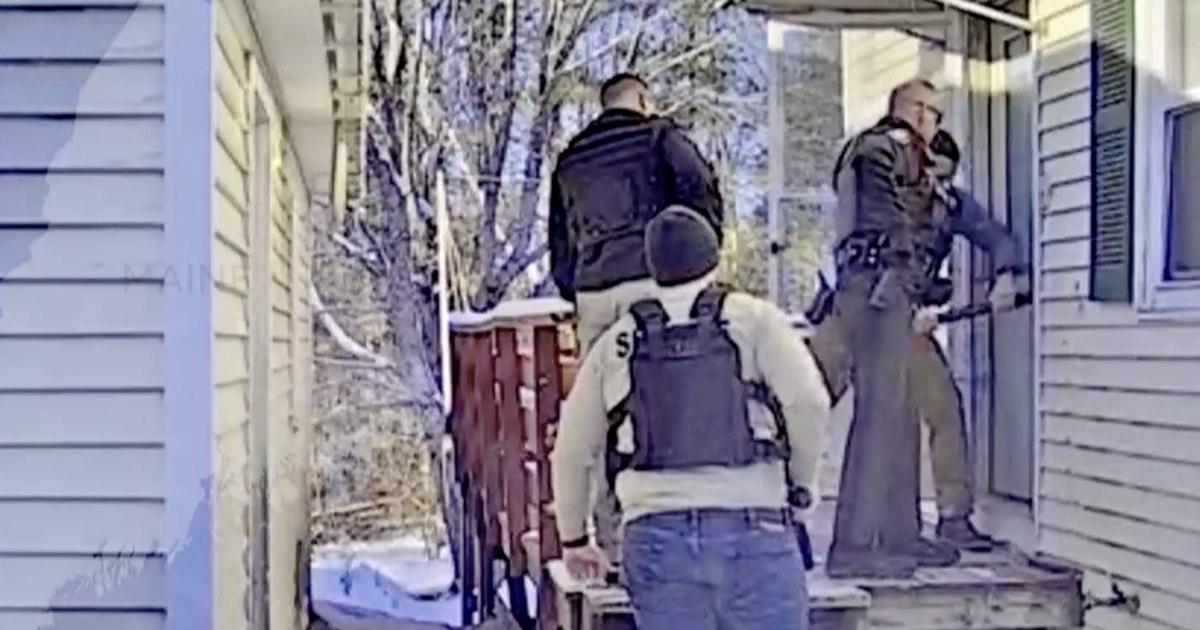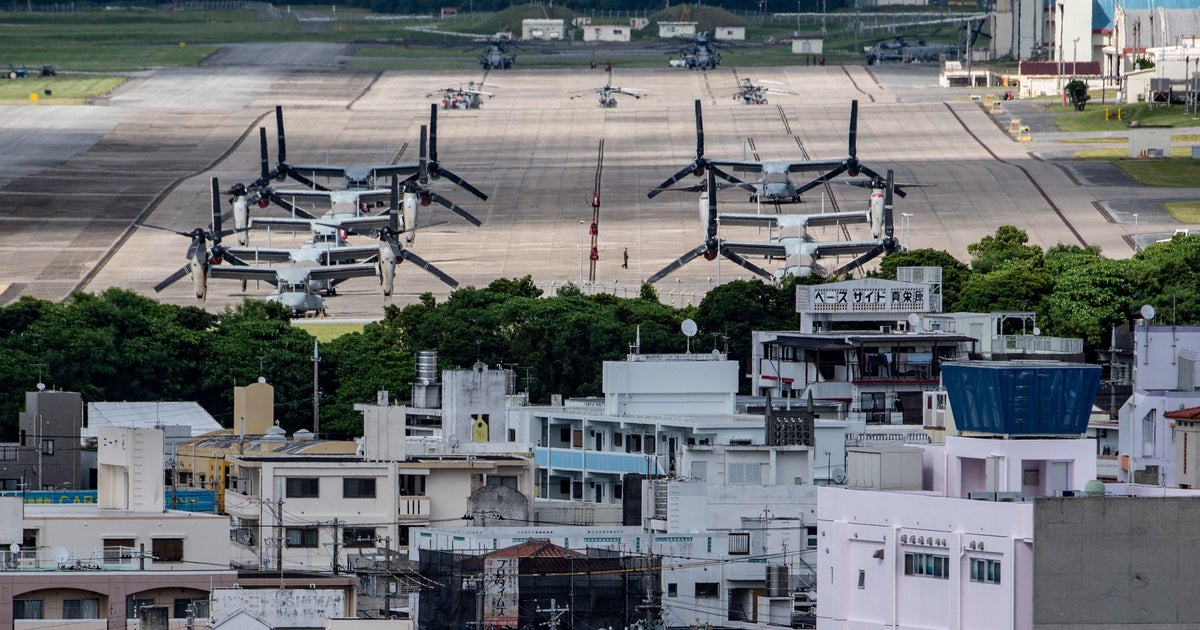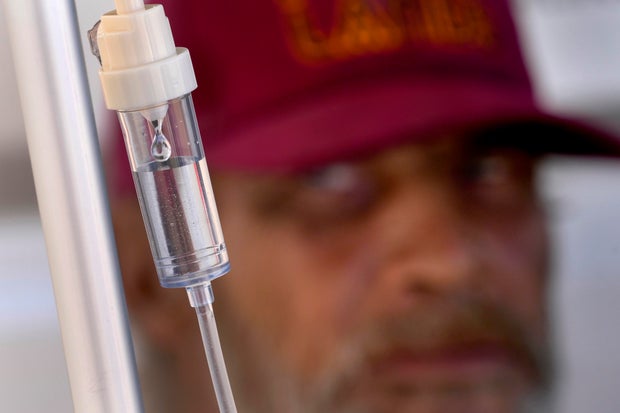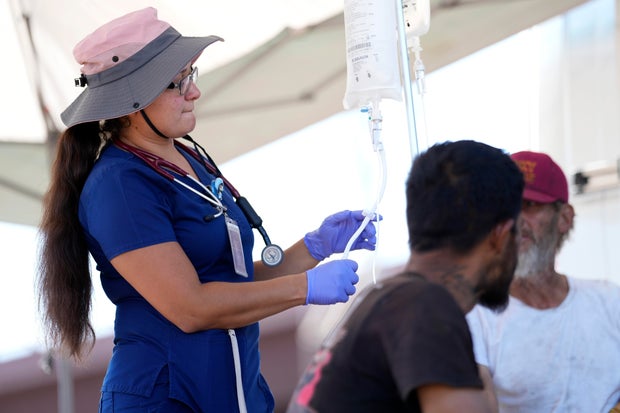CBS News
Black market marijuana tied to Chinese criminal networks infiltrates Maine

Maine is the newest frontier for the illicit marijuana trade, with potentially hundreds of suspected unlicensed grow houses operating in the state, a CBS News investigation has found.
It’s part of a larger phenomenon nationwide. Thousands of illegal marijuana farms have been cropping up in states like Oklahoma, California and Colorado, according to Raymond Donovan, the former chief of operations for the Drug Enforcement Agency.
“[Maine] is a perfect location to cultivate cannabis and do it in a way that is very discreet,” Donovan told CBS News. In part, that’s because of the state’s proximity to major distribution markets in Boston and New York.
In December, after a six-week investigation, Maine law enforcement raided a home in Machias, a rural town on the southeastern coast, and found a large facility with over 2,600 plants and 100 pounds of processed and packaged marijuana.
“I’ve been doing this a lot of years, and that was probably the biggest indoor marijuana grow I’ve ever seen,” Police Chief Keith Mercier said. “It was quite an impressive operation.”
Machias Police were assisted by DEA, FBI, Homeland Security, the Office of Cannabis Policy, Maine Drug Enforcement Agency and the Washington County Sheriff’s Department.
“This is a statewide problem,” Mercier said. “The information we have says that there’s over 200 (facilities) that are actively working right now.”
Maine law enforcement has executed search warrants at at least 34 properties tied to illicit marijuana since last June, and investigations continue.
But the biggest surprise in the proliferation of illegal growing in secluded stretches of Maine may be who’s believed to be backing the operations.
“Chinese organized criminal networks that are international by nature are behind some of the biggest black market marijuana trafficking organizations that we’ve seen to date,” Donovan said.
In February, 50 U.S. lawmakers wrote to Attorney General Merrick Garland demanding answers about China’s role in illicit marijuana nationwide.
“We are deeply concerned with reports from across the country regarding Chinese nationals and organized crime cultivating marijuana on United States farmland,” the bipartisan group wrote.
Donovan said the easiest way to spot an illegal marijuana crop is the amount of electricity it uses, which Maine native Steve Robinson, editor of the Maine Wire, has been tracking. Robinson has compiled a database of suspected illegal cannabis cultivators around the state.
“These locations consume huge amounts of electricity,” he told CBS News. “In order to accommodate that amount of energy, you need to upgrade your electrical infrastructure — and significantly. We’re getting into specialty electrical equipment that is very scarce and hard to come by, especially in the state of Maine.”
Mercier says he used one of Robinson’s articles as a training tool in what to look for before executing the search warrant at the Machias property.
“Once we subpoenaed the power records from the power company, [it] was pretty hard to explain why somebody anywhere would be using that amount of power,” he said.
Mercier said the Machias operation was using four to five times the amount of power that a normal residence would use. Other telltale signs included shuttered windows and complaints from neighbors about pungent smells and suspicious vans coming and going.
During the operation, three men were arrested and charged with unlawful cultivation. Police found a Malaysian passport, a Chinese passport and a Brooklyn driver’s license at the scene.
Donovan told CBS News that some of the people working in marijuana grow operations around the country are Chinese nationals who are victims of labor trafficking.
“[They’re] brought here under the auspices that they’re working under a legit business,” he said. “And they’re often kept unwillingly in these locations and told what to do to oversee the cultivation of these marijuana plants.”
“They were being paid $1,000 a month to work 24/7,” Mercier said. “I wasn’t left under the impression that any of these gentlemen were in charge of anything. They were just strictly there to maintain the product.”
Some of the same criminal groups behind illicit marijuana participate in a far deadlier drug trade, according to Donovan and other law enforcement sources. Donovan said the DEA first connected Chinese organized crime to these illegal weed cultivators by following the fentanyl supply chain.
“We quickly realized that money from selling fentanyl on the streets was going back to Chinese money brokers in Brooklyn and in Queens,” he said. “We started investigating many of these brokers [and] observed that they were also trafficking in marijuana.”
Marijuana remains illegal under federal law, but a majority of Americans now live in states where it’s legal. There is a robust market for illicit marijuana — state regulations allow the sale of marijuana, but demand outstrips supply, opening a market for illegal growers.
Donovan fears that less prosecution will encourage organized crime groups trafficking marijuana to infiltrate sparsely populated states.
“If you have a place like Maine where marijuana is legal, there is less scrutiny on marijuana” he said. “It’s a recipe for disaster in the sense that they’re going to continue to go to these places and cultivate.”
CBS News
Meet the designer turning classic Venetian glass into modern art

Watch CBS News
Be the first to know
Get browser notifications for breaking news, live events, and exclusive reporting.
CBS News
Minnesota Vikings rookie Khyree Jackson dies in car accident

MINNEAPOLIS — Minnesota Vikings rookie Khyree Jackson died overnight in a car accident.
The Upper Marlboro, Maryland native played for Alabama and Oregon. He was drafted by the Vikings in April in round 4 as the 108th overall pick.
He was 24 years old.
“Our thoughts are with Khyree’s family, friends, teammates and coaches, as well as all the victims of this tragic accident,” the Vikings wrote on X.
Vikings head coach Kevin O’Connell said he was “crushed” by the news of Jackson’s death.
“In our short time together, it was evident Khyree was going to develop into a tremendous professional football player, but what was more impressive was his desire to become the best person he could be for his family and those around him,” O’Connell added.
The crash happened in Upper Marlboro shortly after 3 a.m. and involved three cars, according to Maryland state police. Investigators believe the driver of a silver Infiniti car tried to change lanes at a high rate of speed and struck the car that Jackson was in, as well as a Chevrolet Impala.
The two other occupants of Jackson’s car also died in the crash. The occupants of the other cars were not hurt.
Officials believe that alcohol could have been a contributing factor in the crash.
In a statement, the Minnesota Vikings say they have offered support to Jackson’s family, and are offering counseling and emotional support to the players who seek it.
This is a developing story. Check back with WCCO.com for more.
Note: The above video first aired on June 24, 2024.
CBS News
Street medics treat heat illnesses among homeless people as temperatures rise

Alfred Handley leaned back in his wheelchair alongside a major Phoenix freeway as a street medicine team helped him get rehydrated with an intravenous saline solution dripping from a bag hanging on a pole.
Cars whooshed by under the blazing 96-degree morning sun as the 59-year-old homeless man with a nearly toothless smile got the help he needed through a new program run by the nonprofit Circle the City.
“It’s a lot better than going to the hospital,” Handley said of the team that provides health care to homeless people. He’s been treated poorly at traditional clinics and hospitals, he said, more than six years after being struck by a car while he sat on a wall, leaving him in a wheelchair.
Circle the City, a non-profit that works in multiple cities and hospitals and treats about 9,000 people annually, introduced its IV rehydration program as a way to protect homeless people in Phoenix from life-threatening heat illness as temperatures regularly hit the triple-digits in America’s hottest metro.
Matt York / AP
Homeless people accounted for nearly half of the record 645 heat-related deaths last year in Maricopa County, which encompasses metro Phoenix. As summers grow warmer, health providers from San Diego to New York are being challenged to better protect homeless patients.
Dr. Liz Frye, vice chair of the Street Medicine Institute which provides training to hundreds of healthcare teams worldwide, said she didn’t know of groups other than Circle the City administering IVs on the street. The organization also distributes tens of thousands of water bottles each summer and tries to educate people about hot weather dangers.
“But if that’s what needs to happen to keep somebody from dying, I’m all about it,” Frye said.
Bringing care to people in need
The amount of people requiring treatment for heat illnesses is rising. The Boston Health Care for the Homeless Program, featured in last year’s book, “Rough Sleepers,” now sees patients with mild heat exhaustion in the summer after decades of treating people with frostbite and hypothermia during the winter, said Dr. Dave Munson, the street team’s medical director.
“It’s certainly something to worry about,” said Munson, noting that temperatures in Boston hit 100 degrees with 70% humidity during June’s heat wave. Homeless people, he said, are vulnerable to very hot and very cold weather not only because they live outside, but they often can’t regulate body temperature due to medication for mental illness or high blood pressure, or because of street substance use.
The Phoenix team searches for patients in homeless encampments in dry riverbeds, sweltering alleys and along the canals that bring water to the Phoenix area. About 15% are dehydrated enough for a saline drip.
Matt York / AP
“We go out every day and find them,” said nurse practitioner Perla Puebla. “We do their wound care, medication refills for diabetes, antibiotics, high blood pressure.”
Puebla’s street team ran across Handley and 36-year-old Phoenix native Phillip Enriquez near an overpass in an area frequented by homeless people because it’s near a facility offering free meals. Across the road was an encampment of tents and lean-tos along a chain-link fence.
Enriquez sat on a patch of dirt as Puebla started a drip for him. She also gave him a prescription for antibiotics and a referral to a dentist for his dental infection.
Living outside in Arizona’s broiling sun is hard, especially for people who may be mentally ill or use sedating drugs like fentanyl that make them less aware of their surroundings. Stimulants like methamphetamine contribute to dehydration, which can be fatal. Dr. Matt Essary, who works with Circle in the City’s mobile clinics, said the organization also often treats surface burns that can happen when a medical emergency or intoxication causes someone to fall on a sizzling sidewalk.
Matt York / AP
Temperatures this year have reached 115 degrees in metro Phoenix, where six heat-related deaths have been confirmed through June 22. Another 111 are under investigation, and the city is seeing an “increasing” number of patients with heat illnesses every year, according to Dr. Aneesh Narang, the assistant medical director of emergency medicine at Banner Medical Center-Phoenix, which treats many homeless people with heat stroke.
Narang’s staff works frequently with Circle the City, whose core mission is providing respite care, with 100 beds for homeless people not well enough to return to the streets after a hospital stay.
Extreme heat worldwide requires a dramatic response, said physician assistant Lindsay Fox, who cares for homeless people in Albuquerque, New Mexico, through an initiative run by the University of New Mexico’s School of Medicine.
Three times weekly, Fox treats infections, cleans wounds and manages chronic conditions in consultation with hospital colleagues. She said the prospect of more heat illness worries her.
Highs in Albuquerque can hit the 90s and don’t fall enough for people living outside to cool off overnight, she said.
“If you’re in an urban area that’s primarily concrete, you’re retaining heat,” she said. “We’re seeing heat exposure that very quickly could go to heat stroke.”
Serious heat stroke is far more common in metro Phoenix, where Circle the City is now among scores of health programs for the homeless in cities like New York, San Diego and Spokane, Washington.
Circle the City works with medical staff in seven Phoenix hospitals to help homeless patients get after-care when they no longer need hospitalization. It also staffs two outpatient clinics for follow-up.
Rachel Belgrade waited outside Circle the City’s retrofitted truck with her black-and-white puppy, Bo, for Essary to write a prescription for the blood pressure medicine she lost when a man stole her bicycle. She accepted two bottles of water to cool off as the morning heat rose.
“They make all of this easier,” said Belgrade, a Native American from the Gila River tribe. “They don’t give you a hard time.”











